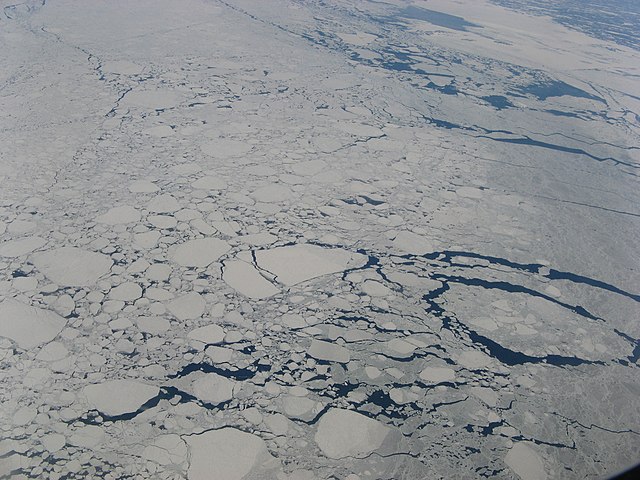Vladimir Yulyevich Wiese was a Russian scientist of German descent who devoted his life to the study of the Arctic ice pack. His name is associated with the Scientific Prediction of Ice Conditions theory. Wiese was a member of the Soviet Arctic Institute and an authority on polar oceanography. He was also the founder of the Geographico-hydrological School of Oceanography.
Wiese c. 1930
Wiese on a 2000 Russian stamp
Sea ice arises as seawater freezes. Because ice is less dense than water, it floats on the ocean's surface. Sea ice covers about 7% of the Earth's surface and about 12% of the world's oceans. Much of the world's sea ice is enclosed within the polar ice packs in the Earth's polar regions: the Arctic ice pack of the Arctic Ocean and the Antarctic ice pack of the Southern Ocean. Polar packs undergo a significant yearly cycling in surface extent, a natural process upon which depends the Arctic ecology, including the ocean's ecosystems. Due to the action of winds, currents and temperature fluctuations, sea ice is very dynamic, leading to a wide variety of ice types and features. Sea ice may be contrasted with icebergs, which are chunks of ice shelves or glaciers that calve into the ocean. Depending on location, sea ice expanses may also incorporate icebergs.
Broken pieces of Arctic sea ice with a snow cover
Nilas in Baffin Bay
Aerial view showing an expanse of drift ice offshore Labrador (Eastern Canada) displaying floes of various sizes loosely packed, with open water in several networks of leads. (Scale not available.)
Aerial view showing an expanse of drift ice consisting mostly of water. (Scale not available.)






